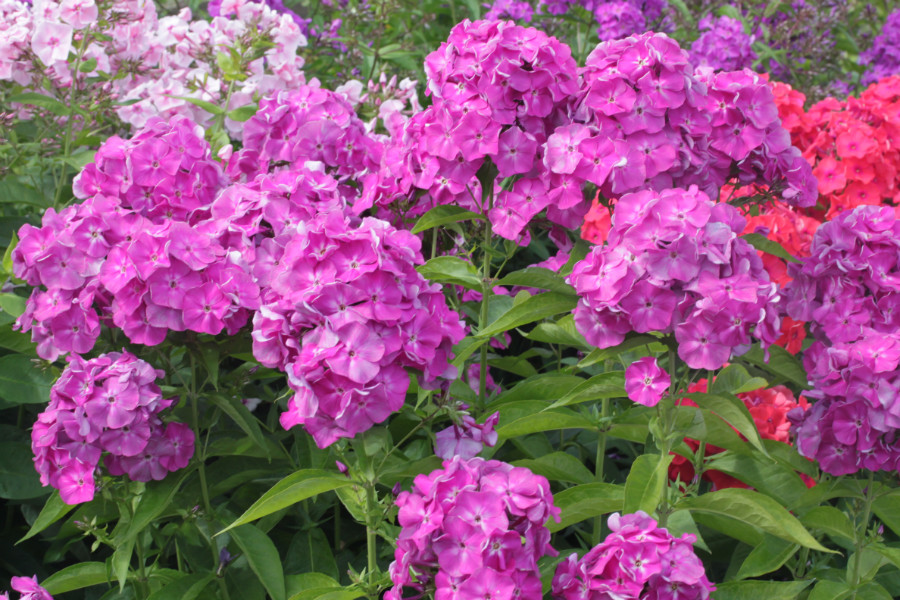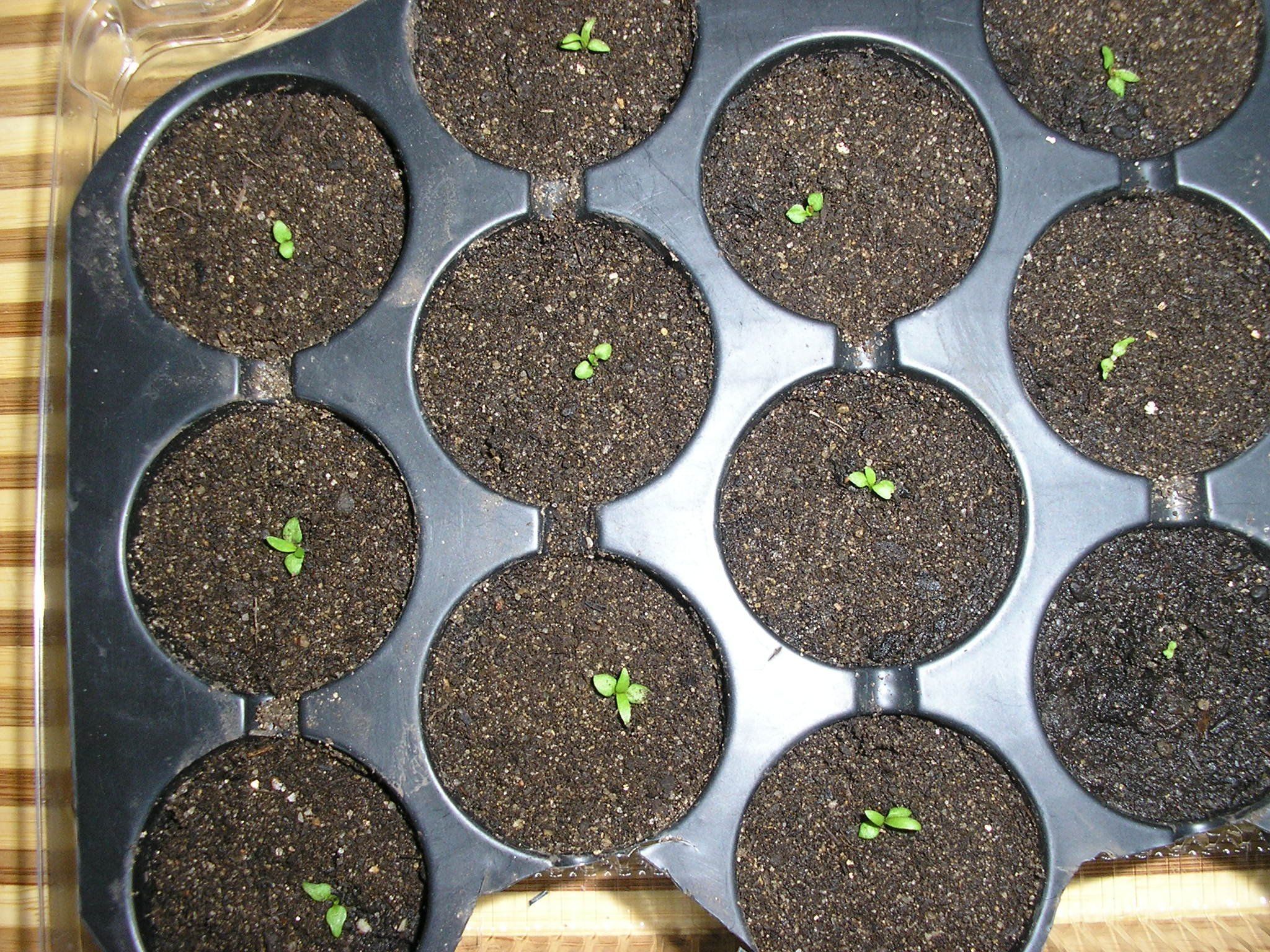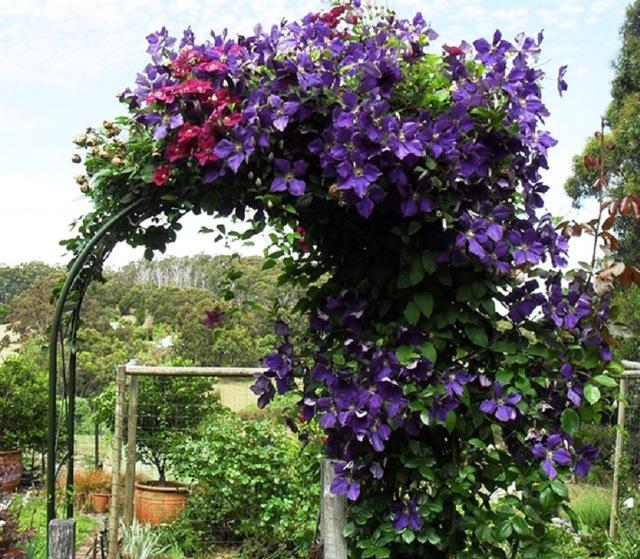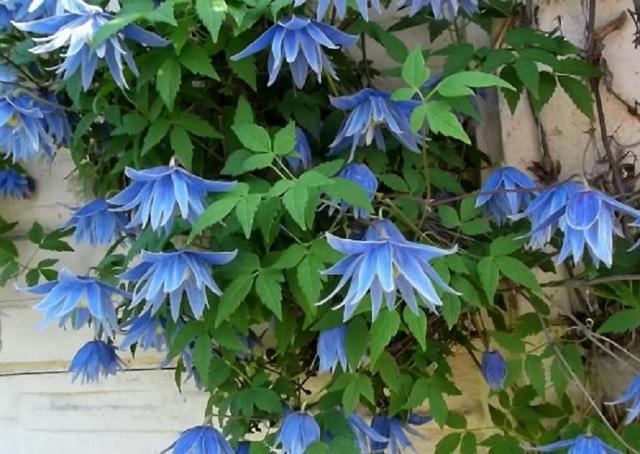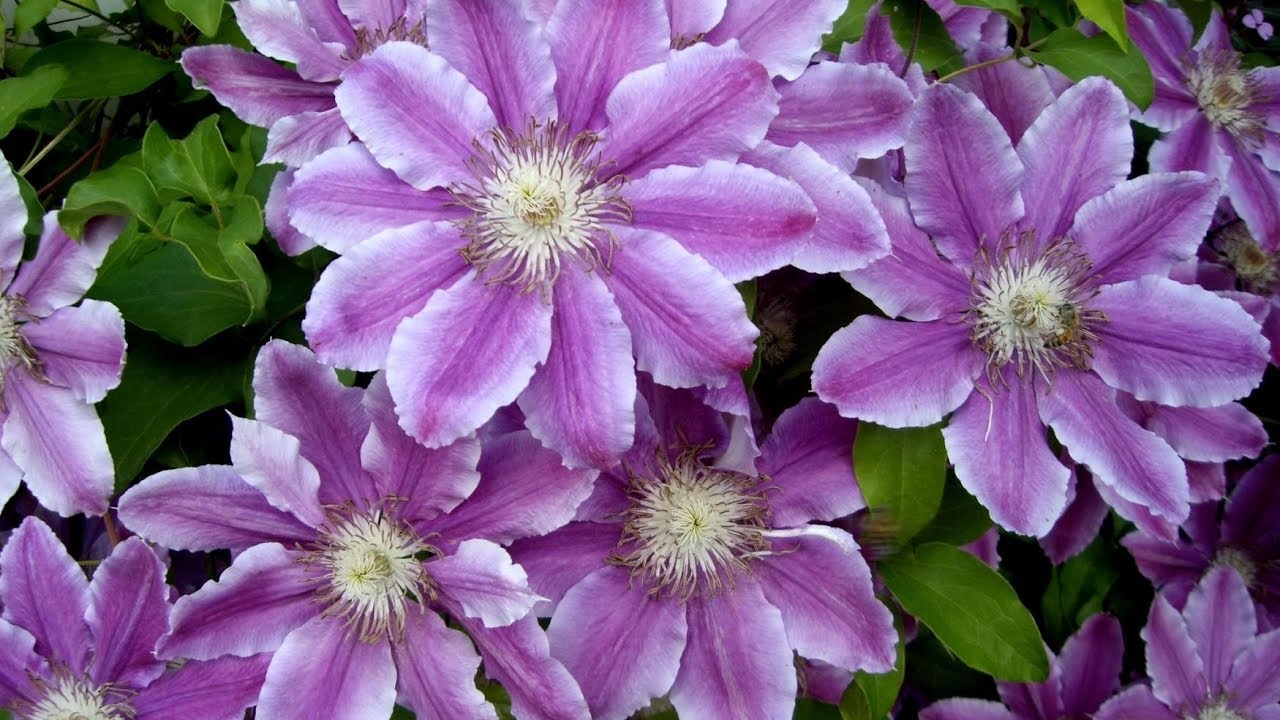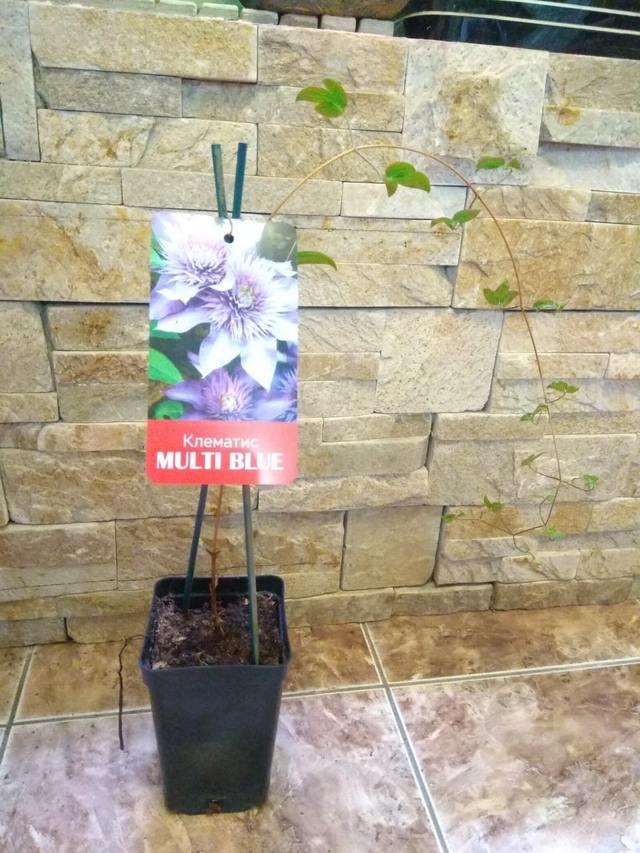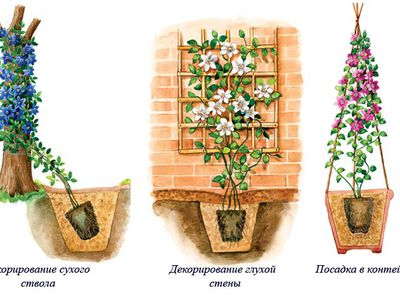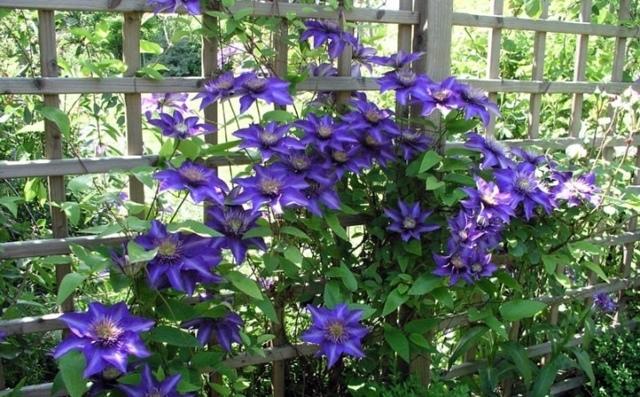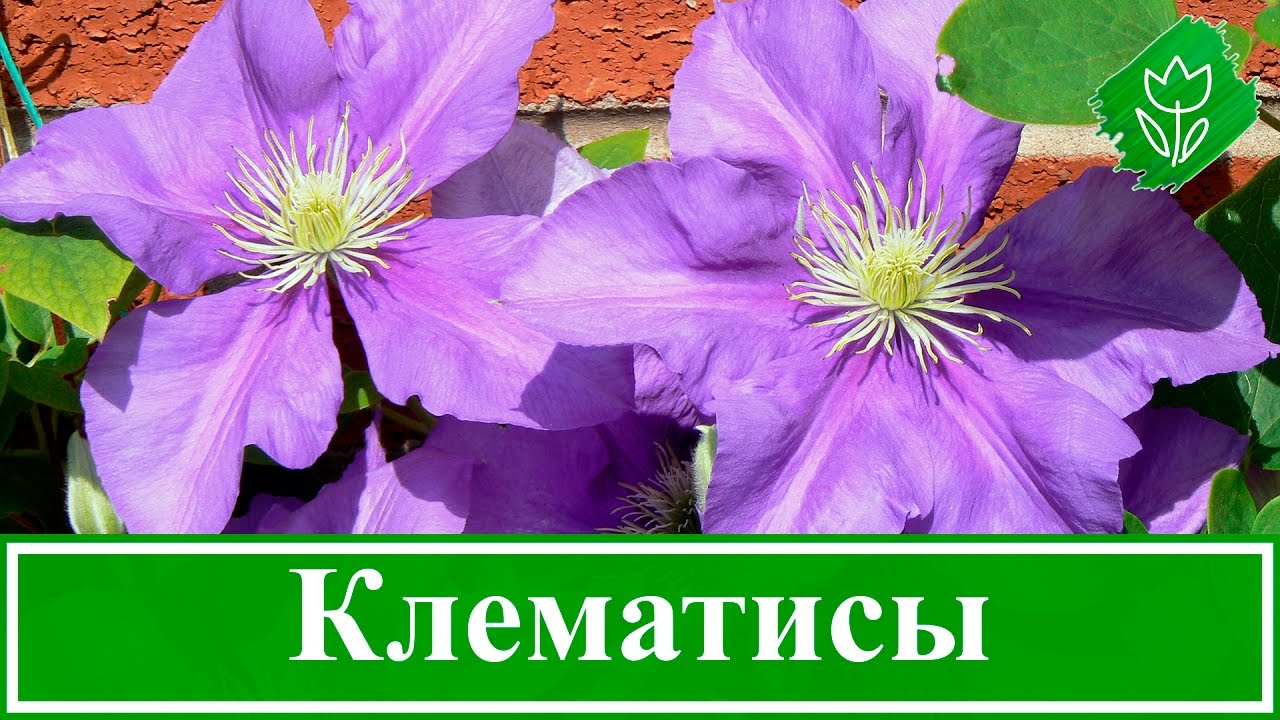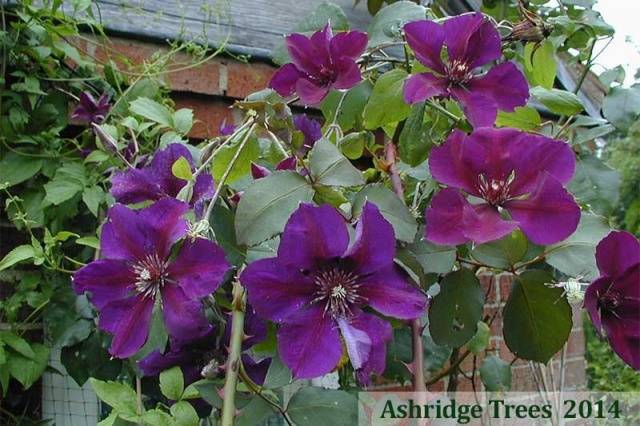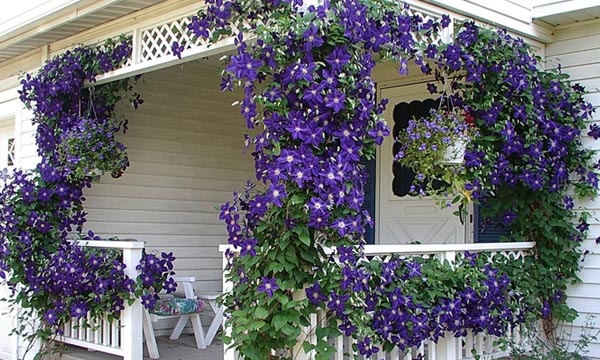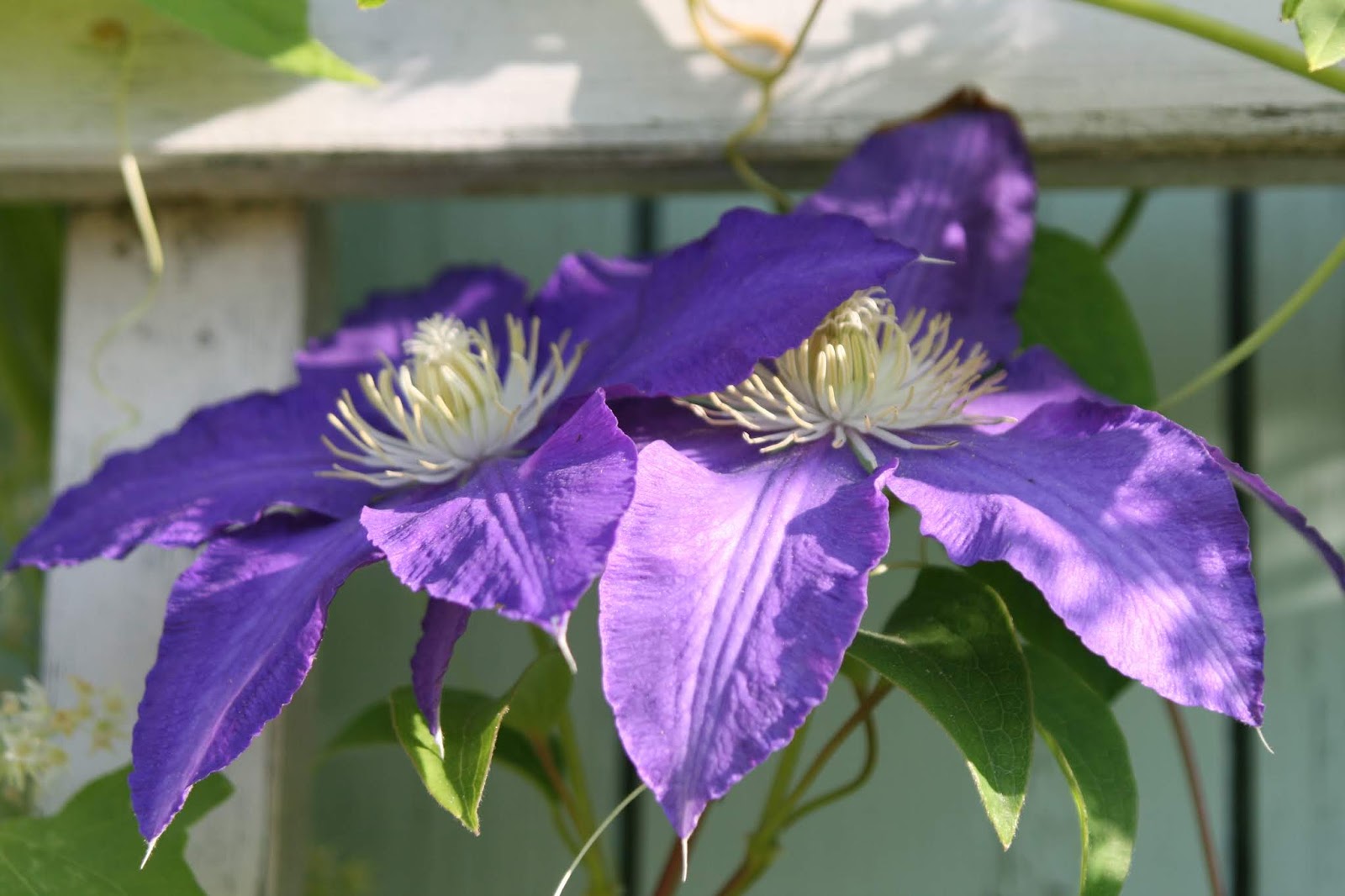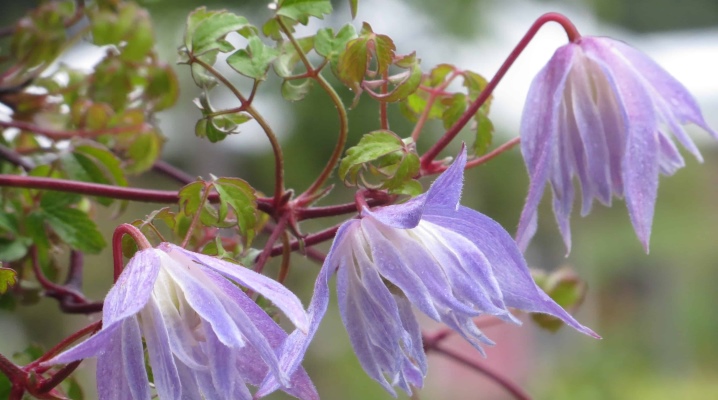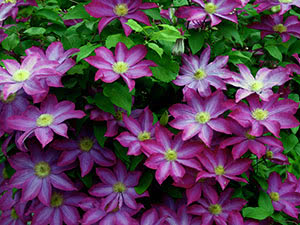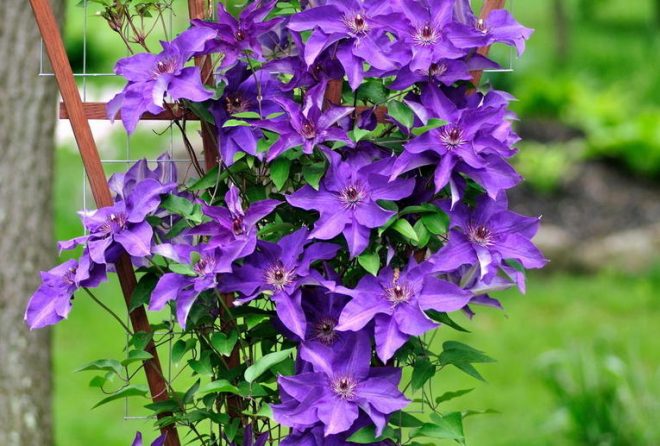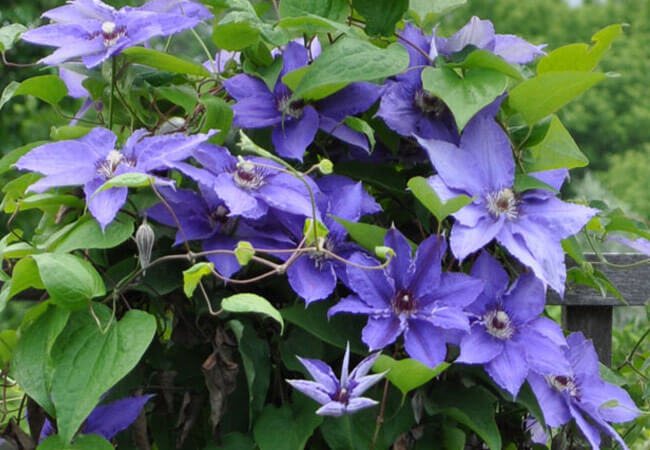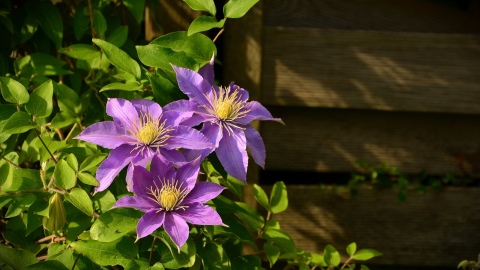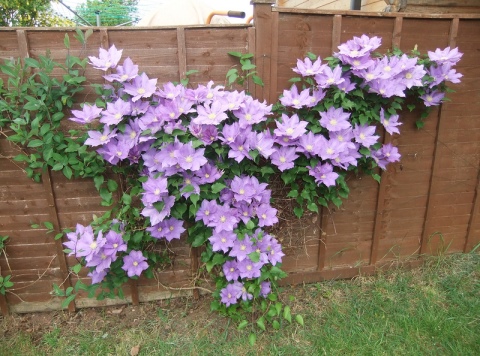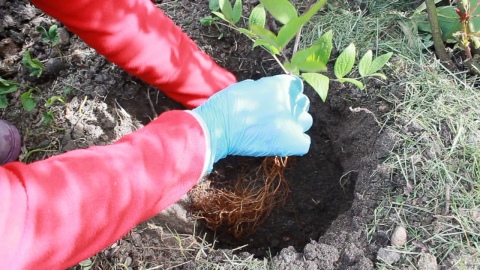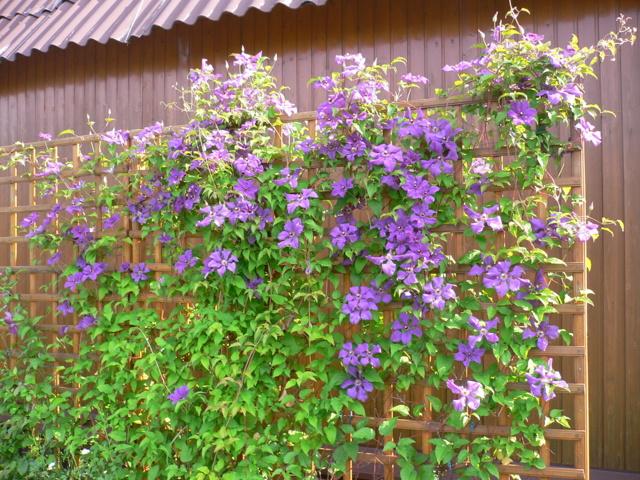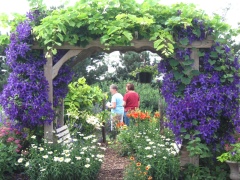Further care of clematis
After planting, the plant needs further care: a garter to a support, watering, fertilizing, pruning shoots.
In spring and summer, shoots are tied to supports. Otherwise, they are chaotically intertwined.
Care must be taken to ensure that the branches are not damaged or infected. Supports are installed before planting or immediately after planting.
Otherwise, there is a possibility of damage to the root system.
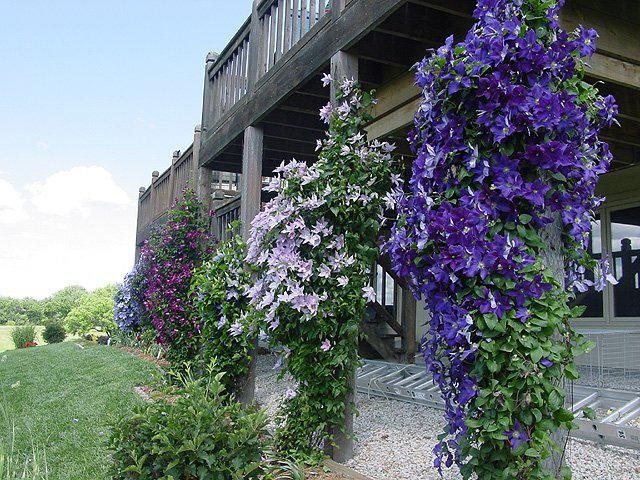
Ready-made buildings for sale. Most gardeners make their own special pyramids, arches, stuff a large metal mesh or wooden mesh structures on the wall of the building. The growing shoots are first tied up and directed along the support.
The supports must be strong, but no more than 1 cm thick in diameter.
It is recommended to regularly loosen the soil around the bushes, remove weeds, last year's cut shoots and leaves.
Watering
The plant needs weekly watering in spring and autumn, in summer - 2-3 times a week. A young bush needs at least 20 liters of water, a mature one - up to 40 liters. Drip irrigation is effective.
Mulching the soil allows you to keep moisture longer, excludes the appearance of weeds.
Top dressing
Clematis need regular feeding. Before carrying out these works, the site is watered.
During the season, at least 5 dressings are required:
- Late April-early May carry out the first feeding with ammonium nitrate (20 g per 10 l of water). 5-10 liters of fertilizer are poured under each bush. Depends on the size and age of the bush.
- After 7-10 days, an infusion of mullein (1:10), fermented grass (1:10) or chicken droppings (1:15) is used for fertilization. In the absence of organic fertilizers, a urea solution is used (10 g per 10 l of water).
- Two weeks after the second feeding, they are watered with complex fertilizer. You can take 1 tablespoon of “Kemira universal”, dissolve in 10 liters of water. It is advisable to alternate the application of mineral fertilizers with organic ones.
- The fourth feeding is carried out with the onset of budding - with phosphorus-potassium fertilizers.
- The last top dressing with a full complex fertilizer is after the end of flowering and pruning.
Attention! Shrubs do not fertilize during flowering. Flowering time is shortened
Between the second and third dressings (in May), it is useful to pour the milk of lime. Dissolve 100-150 g of lime in 10 liters of water. Use on 1 square meter.
In summer, for monthly dressings, a weak solution of boric acid (1-2 g) and potassium permanganate (2-3 g) are used per 10 liters of water. Shrubs are sprayed with urea (½ tablespoon is dissolved in 10 liters of water).
Outdoor planting
It is necessary to prepare a hole for a plant 3 times larger than the volume of its roots. The latter resemble a washcloth in appearance. It is helpful to add compost or well-worked manure and garden soil and mix thoroughly. In the case of clay soils, it is worth deepening the hole and applying drainage from pebbles or expanded clay. Drainage can be separated from the ground with a piece of agrotextile.
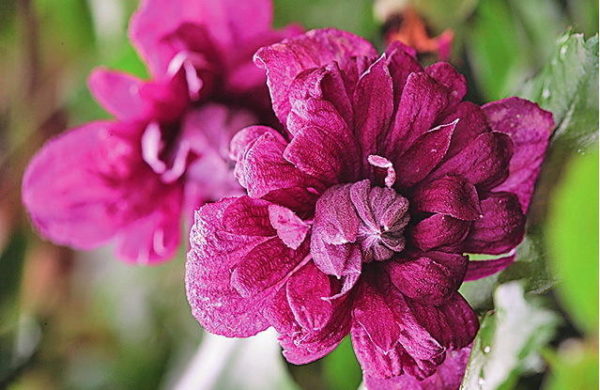
Before planting, the pot of clematis must be immersed in water for about 5-10 minutes so that the roots will thoroughly absorb the water. Then remove the root ball from the pot and place it in the hole.
Botanical varieties are buried at the same depth at which they grew, or slightly deeper. On the contrary, varieties with large flowers, after removing the lower leaves, are planted 6-10 cm deeper than they previously grew. This allows the plants to root better.

The soil around the clematis should be dusted and lightly pressed, and then watered abundantly. The ground near them can be covered with pebbles or planted with small vegetation, which will protect the roots from drying out. Plants should be watered regularly for the first few weeks after planting to keep the roots moist at all times.
Tip! You need to attach the growing shoots to wooden posts or other types of suitable support
This must be done carefully so as not to damage this delicate plant .. Clematis is also good at climbing trees.
Planted under bushes or free-growing trees, they will cling well to them. Trees under which the prince can successfully grow are decorative apple trees, yews and thuja
Clematis is also good at climbing trees. Planted under bushes or free-growing trees, they will cling well to them. The trees under which the prince can successfully grow are decorative apple trees, yews and thuja.
 You may be interested in:
You may be interested in:
When to dig out tulips after flowering and when to plant again Tulips are some of the most unpretentious flowers. They delight with their color from the first spring days. One of the main ... Read more ...

